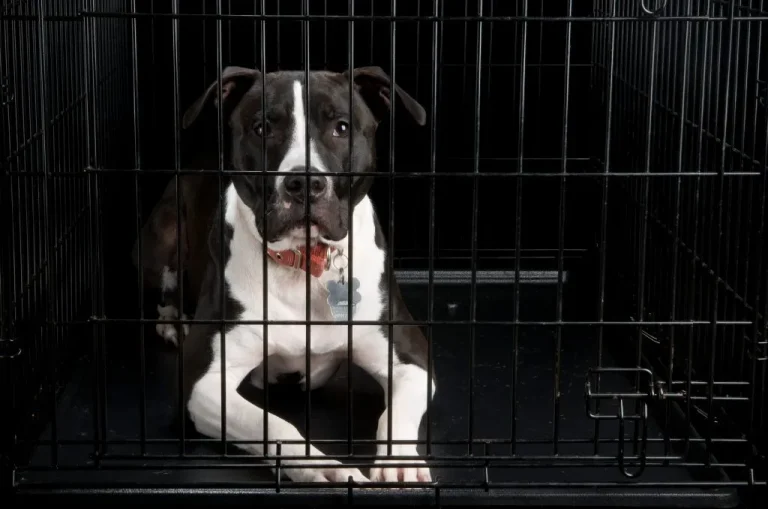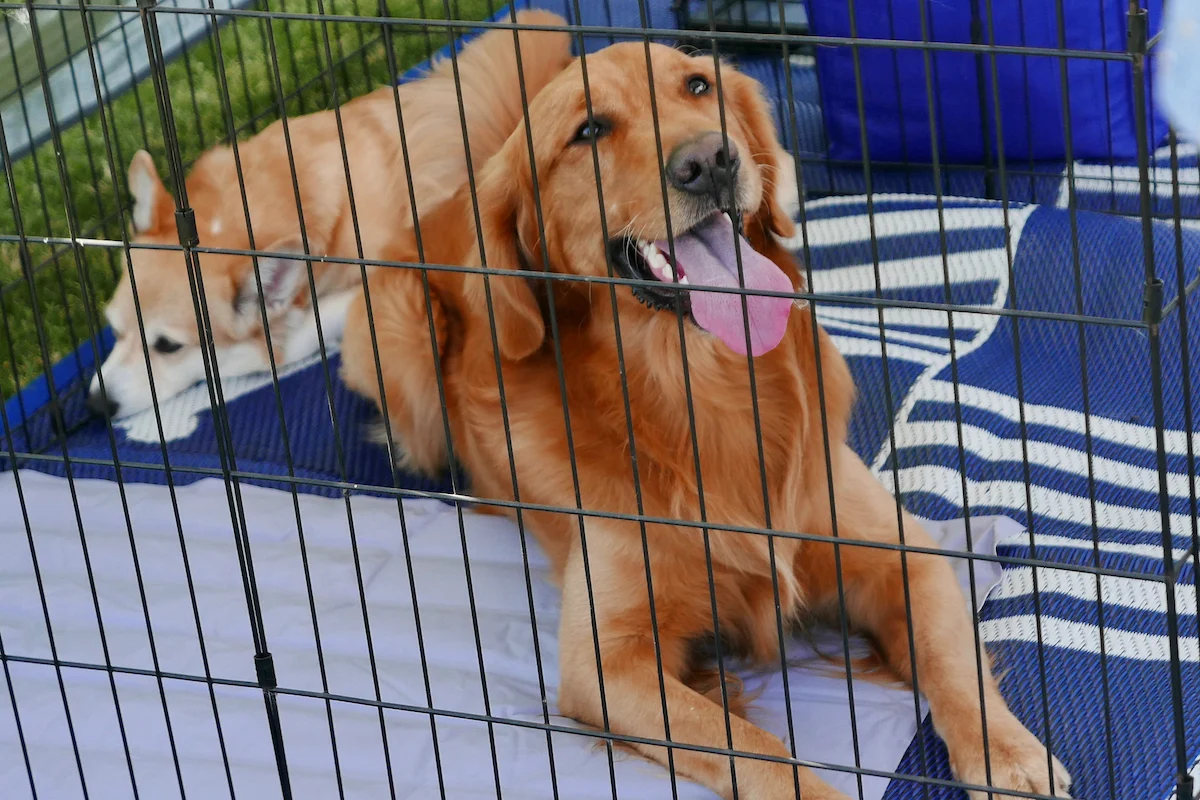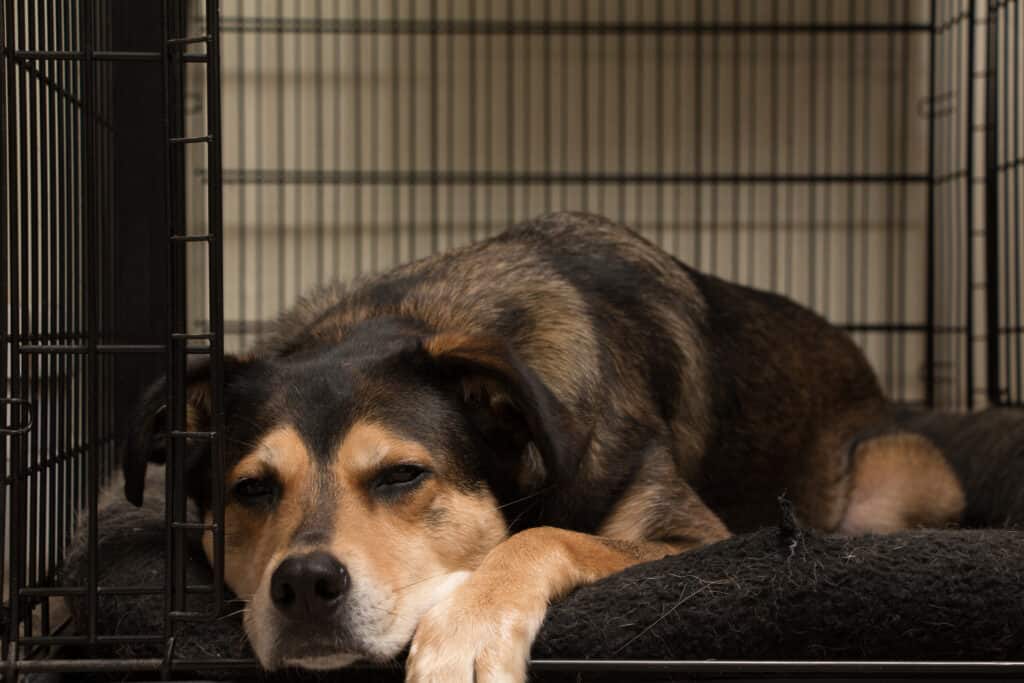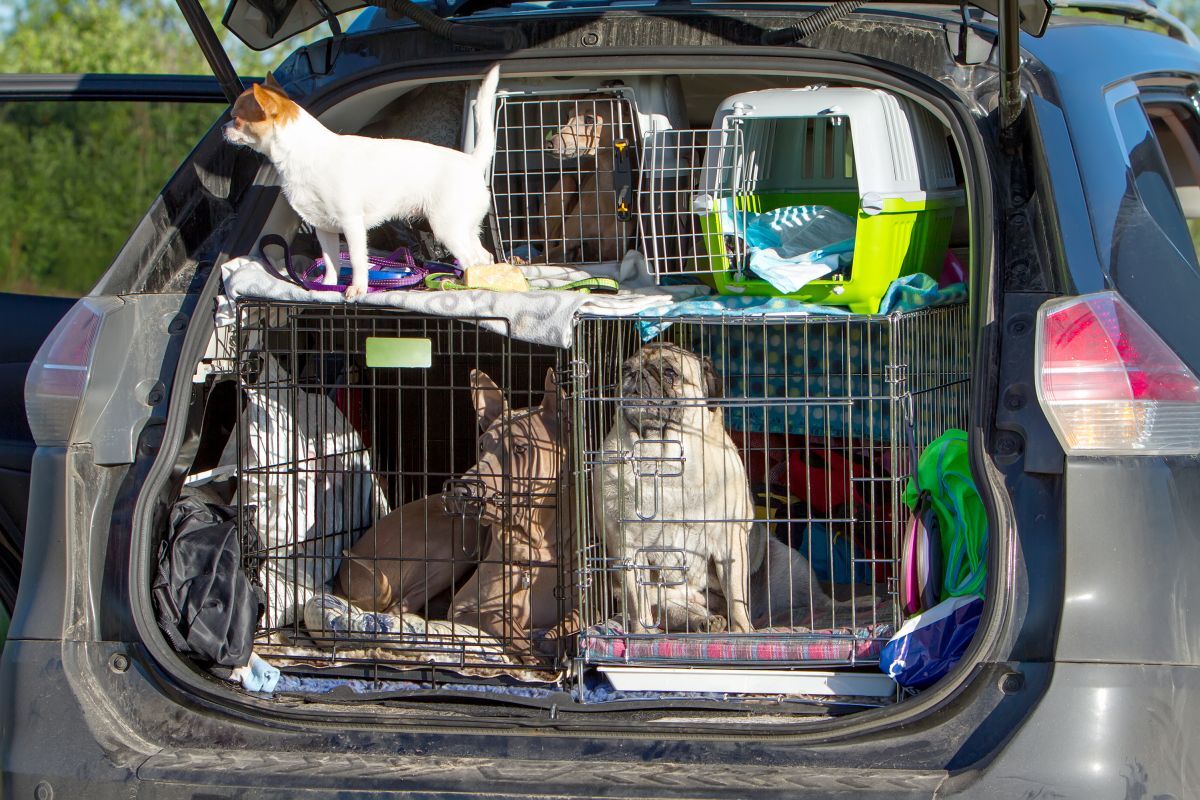Usually, when we talk about dog training, we often say to start as early as possible. There is also this saying you cannot teach an old dog new tricks. Well, turns out, it is possible. Today, we will talk about how to crate-train an older dog.
Now, you might be wondering, shouldn’t an older dog be already trained and socialized? Well, what if you get a rescue dog that has never been properly house-trained? Or you need to move across the country and you need to crate your dog for the trip.
There are many more situations in which you need to learn how to crate train your senior dog.
Why Should You Crate-train Your Dog?
First and foremost, let’s talk about the benefits of crate training. It is a huge debate between owners. For example, one dog owner might see crate training in a positive way. Another pet parent might have reservations about the practice.
But there are many reasons to start crate training with your canine:
- Safety and preparedness for emergencies and natural disasters
- Easier and safer trips to the veterinarian
- Confinement during illness or injury
- Easy and safe transportation
- Easier travel with your pet
No matter what you think about crate training, chances are, you will need it at one point during the lifetime of your pooch.
Is It Possible To Crate Train An Adult Dog?
Yes, adult dogs can be crate trained as well. There is no reason to think you cannot train an older dog. Even if your dog has lived its entire life without crate exposure, you can always get to the end goal.
No dog, be it a young puppy or a senior dog will be comfortable and happy in the crate without proper preparation, socialization, and training.
Yes, socialization. It is more than just exposing dogs to other dogs and having them play. Socialization is exposure to different situations. And it plays a huge role in crate training your dog.
Things To Keep In Mind
Before you start with crate training, you have to keep a few things in the back of your mind. These will prepare you for the training process and ensure success in it.
Get your Dog Ready
Before you start training, exercise your dog to drain its energy. You can play some games, or go for a long walk. Always take your dog outside for the bathroom before you crate train. You do not want a potty break to interrupt your dog training process, right?
Be Patient
Unlike a young puppy, who has yet to form habits, adult dogs have already spent years developing some habits. Some have spent years without even entering a crate. This means older dogs will be more resistant to the idea and fight it more. Keep trying, but be patient.
Use Lots Of Treats
The secret to how to crate train an older dog are treats. Use lots of it. That will help your pooch associate the crate with positive feelings. If you have a rescue dog, use even more high-value treats. Usually, rescue dogs crave food and quickly make positive associations with someone who gives them food.
Make It Comfortable
The dog crate should be a comfortable place. That means placing a soft blanket inside. Treat it like a good resting place, not a transportation tool.
Challenges With An Older Dog
Crate training a puppy is different than training an older dog. This is where people mention the phrase you cannot teach an old dog new tricks. But, turns out, you can.
Yes, there are challenges. Older dogs are capable of learning new things, but it is challenging. Why? Because with puppies, everything is fun, new, and exciting. They haven’t developed routines and habits.
With older dogs, things are different. Your senior dog is a creature of habit. Sometimes, they need to unlearn old habits to learn new ones.
But on the flip side, with an older dog, you might get a calmer dog that will appreciate the cozy hideaway of the crate more than a young and active puppy.
Step-by-step Guide
Now let’s get to how to crate train an older dog. It is a long training process, and we want you to be successful every step of the way.
Step 1 – Choosing The Right Space
You cannot crate-train a dog anywhere in the house. If possible, choose a quiet and secluded space where your dog can go to rest and enjoy some “me time”. It should be a place away from the chaos and noise in the home.
If you have a Velcro dog, one that wants to spend time with the family every second of the day, find a spot in the living room or kitchen area. There, your dog will be close to you.
Another option is to choose your dog’s favorite place to retreat.
Step 2 – What Is The Right Crate?
Once you decide on the location, the next step is to choose the right crate for your dog. These tools come in different shapes and sizes.
First, let’s talk about the material. Choose one that fits your needs. The best for cleaning is easy-to-clean wire cages. But there are also soft-sided carry crates, multifunctional wooden crates, wooden crates, and more.
Then, the size should be another factor. Generally speaking, it should be big enough for your dog to stand up, turn around, and lie down comfortably. At the same time, it should not be as big so that he can relieve on one side and lie down on the other side.
Step 3 – Timing Is Everything
One of the big mistakes people make is they introduce the crate when the puppy is in the middle of playing. The best time to introduce your puppy to any new experience is when your pet is calm and relaxed.
First, let your dog get accustomed to the fact it has a crate in the room. Then, allow your dog to sniff it, and gets familiar with the crate.
But the most important thing is always to start crate training after a potty break. You cannot train a dog that wants to go to the bathroom.
Step 4 – Positive Reinforcement
For any training, be it basic obedience, dog agility, or crate training, positive reinforcement is the key.
Use lots of treats and reward every step closer your dog is to be comfortable in the crate. In the beginning, throw treats in the back of the crate so your dog enters. Then reward for staying calm inside. Then reward for closing the door and your pooch staying inside. And continue until your dog is comfortable staying inside a crate for longer periods.
Step 5 – Begin Slowly
As we said before, begin slowly and move patiently. This is the key to success. You can start by opening the door and placing a few treats inside, encouraging your dog to get them. We mentioned some of the routines before in Step 4.
What is important to understand is that you cannot move to a higher level of challenge, meaning closing the door or anything else, unless your dog is comfortable with what you are already doing. And if you have a setback, go back, and repeat earlier steps.
You can add the command or cue when your dog is already comfortable in its crate.
Can Your Dog Have More Than One Crate?
Generally speaking, yes. For practical reasons. You can have one in the car and one in the house. But you will have to train your dog in both of them.
On the flip side, having more than one crate eliminates the need to move the crate from one place to another.
Common Challenges
Here are three challenges you might face with an older dog.
- Your older dog is a creature of habit, and it will take them a lot more time to get accustomed to the new situation. Make the crate a comfortable and comforting space, and be consistent with your daily crate training process
- Older dogs are more fearful, especially recently adopted ones. You must build a bond before you start crate training. Allow your dog to learn at its own pace
- Allow your dog to find an area where they feel safe, and then add a crate there










